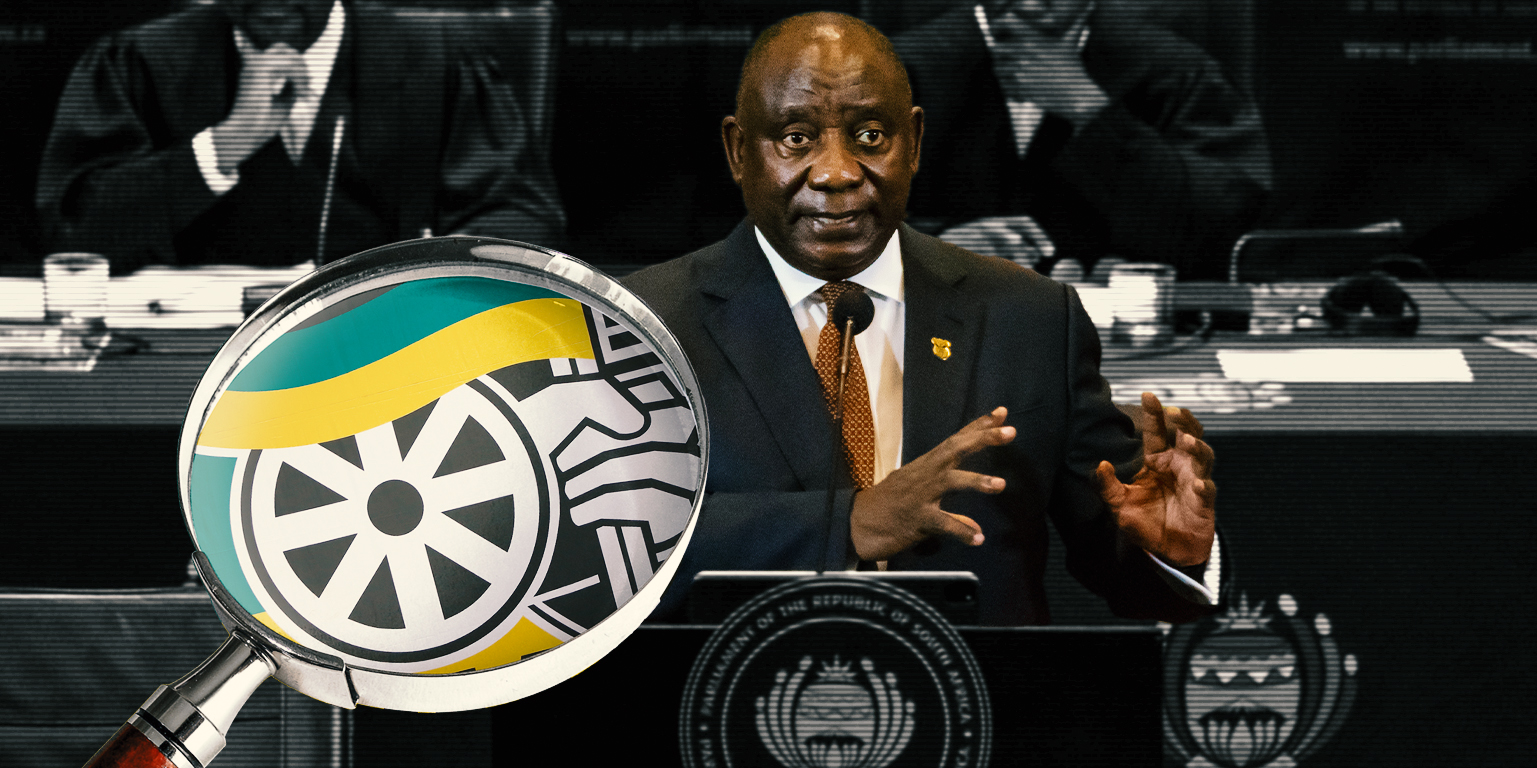Social grants, the National Student Financial Aid Scheme, the national minimum wage, free basic education and healthcare, housing and increased access to basic services like water, electricity and sewage. Expect all these to be ticked in a presidential touting of achievements not just of the past five years, but going back to 1994.
President Cyril Ramaphosa on Thursday evening will want to underscore the governing ANC’s track record right from the start of South Africa’s democracy which will be 30 years old on 27 April.
The upcoming elections – he may announce a date if the pattern ahead of the 2019 poll holds – are touted as a watershed moment that may see the ANC lose its majority.
Highlighting these social protection measures and benefits is in line with the tone set in the ANC January 8 Statement where the governing party set out its priorities for the year.
This focus in Sona also echoes the ANC styling itself as the defender of democratic gains, sans the party political ideological twists of regime-change victimhood.
Read more in Daily Maverick: With an eye on the polls, ANC fires salvo at ‘anti-transformation forces’
Priorities, whether for party or state, haven’t changed for some time, although the January 8 Statement on building the family was something of a curveball. But for years it’s all been about economic transformation and growth, jobs, social wage to protect against poverty, improved basic services, infrastructure investment, fighting crime and corruption and ending the rotational power cuts.
On the delivery front, Ramaphosa’s administration has prepared a five-year track record document. For much else, Statistics SA provides the numbers for Ramaphosa to weave the thread of post-1994 improvement.
The most recent Stats SA figures show that while one in five households depends on grants for survival, 89.3% have access to mains electricity, 88.7% access to piped water and 84.1% to sanitation.
The 1995 household survey showed only 33% of African households had access to water inside their homes, 22% had an inside flush toilet, and 51% used electricity for lighting. Stats for white and Indian households hovered around the 98% mark.
The catch is in the details. For example, access to sanitation in Limpopo is just 58.9%, with one in three households in that province still using wood, not electricity.
The election campaign trail will sidestep such specifics, as will Thursday’s Sona.
Ramaphosa won’t be able to simply gloss over South Africa’s deep-seated and deepening problems.
Rotational power cuts continue to shave off economic growth percentages, and the freight and road chaos has stymied economic recovery and job numbers.
Persistently stubborn unemployment stands at 41.2% on the expanded definition that includes those too disheartened to even try to find work.
Ramaphosa is determinedly glass-half-full. Presidential talking points have stayed the same – plans like the energy action plan, crisis committees for rail, freight and crime with private sector partnerships, and unfolding reforms.
Talking to this Sona has included appointments. In 2023 ex-Tshwane mayor, Presidency infrastructure chief Kgosientsho Ramokgopa was announced as electricity minister. In 2022 businessman Sipho Nkosi was announced to head the Presidency’s red tape reduction unit.
Throwing about numbers, like appointments, is meant to highlight a government at work – so and so many megawatts produced by so and so many independent power producers, so and so many passenger rail lines revitalised, so and so many rural Welisizwe bridges built.
Coincidentally, a total of R3.3-billion is set aside for this rural living condition improvement project that uses SANDF engineers and artisans to build 134 bridges; effectively R24.6-million per Welisizwe bridge.
Blackouts, joblessness remain, despite political sweet talk
Meanwhile, rotational power cuts continue even as megawatts come into the grid, largely by the private sector following the easing of regulations like abolishing the licensing threshold.
Business contributed 6,300MW in embedded power, according to Ramaphosa, speaking at the Mining Indaba. Already, 4,400MW in rooftop solar has been added since that subsidised initiative was announced in Sona 2023.
Again, Thursday’s Sona is set to gloss over such questions.
The bottom line? Rolling power cuts show no sign of ending on Eskom’s forecast, regardless of politicians’ sweet talk. Unemployment is stubbornly high despite a series of initiatives like the presidential employment stimulus and presidential youth employment programme.
Against this backdrop, South Africa’s increasing deficit squeezes a national purse that is already frayed as debt interest instalments are the fastest rising budget allocation. Little remains in the public purse for things like the much talked about basic income grant (BIG).
In the 2023 Sona, Ramaphosa talked of “work under way to develop a mechanism for targeted income support for the most vulnerable, within our fiscal constraints”. Subsequently, Finance Minister Enoch Godongwana linked a BIG to a “comprehensive review” of the social security system.
Given the impact of social grants paid to some 19 million South Africans, in what the governing ANC repeatedly describes as one of its successes, Ramaphosa as party president told the recent ANC NEC, “Discussions should continue about what we call basic income grant”.
As country president, in Thursday’s Sona Ramaphosa is set to bolster the upbeat rhetoric with a dose of the aspirational. The reality check comes later in February when Godongwana delivers the Budget, with possibly further bailouts for state-owned enterprises and – as hinted at in October’s Medium-Term Budget Policy Statement – tax increases.
Perhaps on Thursday an election date will be announced. But whatever the case, the 2024 Sona will be Ramaphosa’s stump speech. DM




 Illustrative image | President Cyril Ramaphosa delivers his annual State of the Nation Address at the Cape Town City Hall on Thursday, 9 February 2023. (Photo: Dwayne Senior / Bloomberg) | (Photos: Rawpixel | Felix Dlangamandla)
Illustrative image | President Cyril Ramaphosa delivers his annual State of the Nation Address at the Cape Town City Hall on Thursday, 9 February 2023. (Photo: Dwayne Senior / Bloomberg) | (Photos: Rawpixel | Felix Dlangamandla)